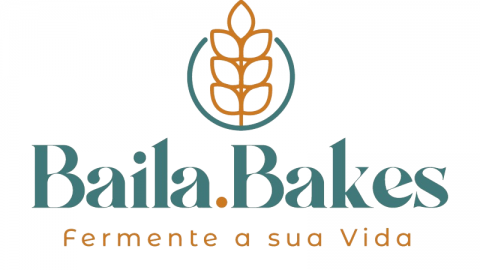Proving bread in the fridge might sound strange to a lot of people. But when it comes to sourdough or sourdough bread, the fridge is an important ally. Keep reading to learn how to get the most out of cold brew.
Fermentação Primária X Fermentação a frio
For those just starting out, every bread dough needs two stages of fermentation. The first, which we call primary fermentation, takes place at room temperature. The second can be done at room temperature or cold. And, in the case of sourdough, the Cold fermentation brings many advantages as:
- Intensify the characteristic flavor of natural fermentation bread
- Delay fermentation, which brings many benefits
- Help fit the bread-making process into your schedule. That is, the fridge can help you with planning.
Fermenting bread in the fridge
While the dough rests in the refrigerator, the yeast enters an almost dormant state. However, the bacteria keep working and developing the flavor of your bread. At low temperatures, bacteria release more acetic acid, enriching the sour taste, typical of naturally fermented bread. But attention, no exaggeration. The important thing is that you test and develop the flavor you want.

Some frequently asked questions when talking about cold fermentation
How long should I or can I leave bread fermenting in the fridge?
Não existe exatamente um tempo determinado. Tudo vai depender da temperatura da sua geladeira, da saúde do seu fermento e também a duração da sua primeira fermentação. Se a sua massa já ferntomeu bastante na fermentação primária, mantenha a temperatura da geladeira baixa (abaixo de 5C) e não deixe na geladeira por um período muito longo. Teoricamente, a massa pode ficar por até 36 horas.
Can I bake immediately after taking the dough out of the fridge?
Yes, not only can you, you should. By taking the dough out of the fridge, cutting it and baking it, you will benefit from the thermal shock. This way, you will get a better rise in the oven and you will have a bread with a more intense color. The Maillard Reaction occurs more slowly, so the scab has more time to develop color.
Do I need to cover the dough?
The cold in the fridge can dry out your dough. Therefore, you can cover the dough with a dish towel or plastic wrap. In my case, I prefer to cover it with a cloth because with plastic, condensation occurs and thus moistens the dough.
Tips for using the refrigerator
✴️ Know your fridge temperature. Measure with a thermometer
✴️ If your fridge is full, the temperature rises. Maybe you need to adjust it.
✴️ Bread keeps fermenting in the fridge, even with the low temperature. Thus, when you have a lot of bread in the fridge, the temperature also increases. That way, you run the risk of over-fermenting the last loaves that went into the oven. Remember: when making bread, planning is everything.
✴️ Bottom shelves have lower temperature
✴️ The opening and closing of the fridge also affects the temperature. So, in a house that has a lot of people, you should pay attention to this.
So, did this article clarify any doubts? Leave your comment.






















Hi Clarissa, super cool tips! I am using the baker diary you shared and after a few months of not baking and my levain going dead (luckily I had some frozen), I re-started full power taking notes of everything. I will try next time to put my bread inside the drawer and bake immediately after taking out of the fridge. Tweaking untill I find my “perfect recipe” again.
Thanks for sharing all these great stuff with us!
Hi Mariane, I'm so glad to hear that. Please keep me up to date on your progress!
Amando suas infirmacoes
Obrigada, Maria das Graças, Fico feliz em saber. Volte mais vezes.
Olá faço pães artesanais, mas ainda tenho muito a aprender, gostaria de saber como sei se o pão está na hora de ir pro forno, e quando saber se meu fermento está corretamente ativo?
Olá Sandryne, essa é uma dúvida comum. E o teste do dedo pode lhe dar um indicação, mas não é 100% segueo. Ao pressionar o seu dedo na massa depois do repouse, se a massa voltar lentamente é um sinal de que o pão está bem fermentado. A textura da massa também fica leve e aerada. Tenho alguns vídeos no meu Insta. Quanto ao fermento, mutas bolhas e aumento de volume (o dobro ou triplo) em pelo menos 8 horas. Te convido a seguir minhas redes sociais Dou muitas dicas por lá.